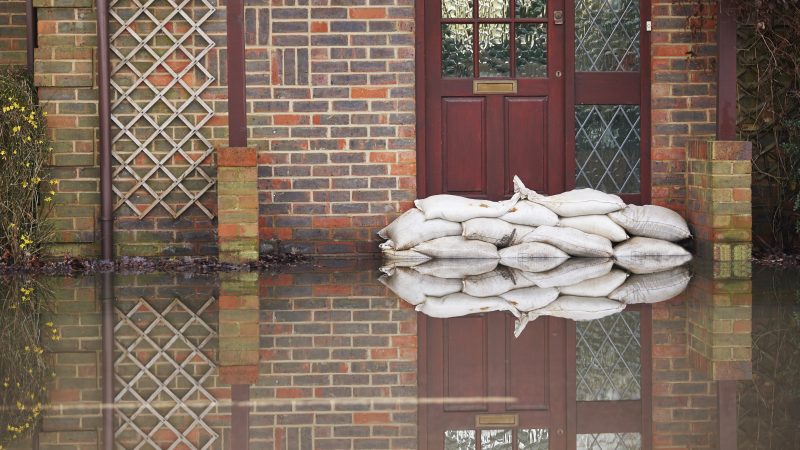
SPONSORED POST
The chaos caused by winter storms including Babet, Gerrit and most recently Henk has provided a series of reminders of the damage and trauma flooding can cause to families and communities. Thousands of households have fallen victim to flooding this winter, adding to the increasing tally that are impacted by extreme weather in the UK every year. Sadly, the science tells us that there’s no doubt we’ll be facing much more of the same weather in the years to come.
Britain needs new houses, and the way we build those houses has got to change to help get the country ready for what’s in store. They need to be the right sorts of homes: high quality buildings, using the right materials, built in the right places, and crucially with the right levels of resilience. Aviva flood mapping shows that nearly one in four homes in the UK are already at risk of flooding. There is no excuse for worsening this issue by building tomorrow’s problems today.
Recent research points to the scale of the problem. Over the last decade, 10% of all new homes have been built in flood zones 2 and 3, which have a higher-than-average risk of flooding. The people living in those homes are understandably concerned. According to Aviva research, more than half of residents living in new-build homes think their home is at risk.
Confronting this challenge is not easy, given the overwhelming demand for new homes, scarce planning resources within local authorities and limited available land.
However, we cannot afford to duck the issue. Otherwise, families will end up living in houses we know are not fit for the future, and which become more and more difficult to insure.
The imminent government consultation on national development management policies gives an opportunity to get the future approach to planning right and make our communities more resilient.
At Aviva, we are calling for planning rules to be further strengthened to help prevent the unsuitable development of homes and commercial buildings not only in current flood zones, but also in areas we know will become flood zones in the years to come. Put simply, it should not be possible to build unprotected buildings in areas at high risk of flooding.
In some areas of the UK, we know that development in flood risk areas is unavoidable. Where this happens, buildings must have appropriate flood resistance, mitigation and resilience measures built in from the start.
The National Infrastructure Commission, set up by the government to provide impartial advice on long-term infrastructure challenges, agrees with this recommendation. In its latest report in October, the Commission advised that the government should require planning authorities to ensure all new development is resilient to flooding from rivers and surface water with an annual likelihood of 0.5% (rather than the current 1%).
There also needs to be extra capacity in the planning system to enforce flood planning conditions and the burden of proof placed on developers so these measures show up in the real world – not just on paper. At the same time, the planning system as a whole should be aligned with, and support, the nation’s net zero targets.
Alongside this, building standards themselves need to become more rigorous. These should not only cover the safety of construction, but also ensure all future properties are resilient to the extreme weather that’s coming our way.
Property-level flood resilience should be built into building standards where the property is located in a flood zone. It is far cheaper and more effective to introduce resilience measures during construction, rather than relying on expensive retrofitting once the damage has been done.
Part of the reason for the current challenges we face is too much short-term thinking. The understandable urgency to build affordable homes should not be at the expense of those living in them, particularly in the most vulnerable, flood-prone communities. Too often, the consequences of bad planning choices tend to fall on ordinary people who can least afford it.
It’s going to take politicians, insurers, the building industry and our communities to work together and make the choices we know are needed today, so that tomorrow’s families can rest easier in their homes, whatever the weather. Policymakers can take an important step this year by ensuring our planning rules help the UK build more sustainably for the future.




More from LabourList
Sean Woodcock MP: ‘Recent events must not sound death-knell for welfare reform’
LGBT+ Labour: Trans activists launch candidate slate for committee election
Survey results: Which new Labour MPs are most popular with LabourList readers?